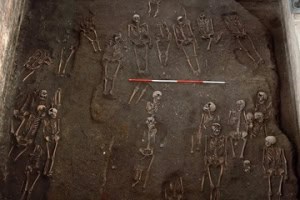WASHINGTON (Web Desk) – Scientists in Portugal have uncovered the fossils of a previously unknown crocodile-like creature that was among the Earth´s top predators more than 200 million years ago.
The remains found on the site of an ancient lake suggest the creature was like a giant salamander, according to a study released Monday.
The primitive amphibians grew up to 2 meters (seven feet) in length and lived in lakes and rivers during the Late Triassic Period.
They lived much like today´s crocodiles and fed mainly on fish, researchers from the University of Edinburgh said in the study, published in the Journal of Vertebrate Paleontology.
The species, which has been named Metoposaurus algarvensis, lived at the same time the first dinosaurs began a dominance which lasted for over 150 million years, the team said.
These creatures were part of the ancestral stock from which modern amphibians like frogs and newts evolved, the team reported.
“This new amphibian looks like something out of a bad monster movie,” said Steve Brusatte, of the University of Edinburgh´s School of GeoSciences, who led the study.
“It was as long as a small car and had hundreds of sharp teeth in its big flat head, which kind of looks like a toilet seat when the jaws snap shut. It was the type of fierce predator that the very first dinosaurs had to put up with if they strayed too close to the water, long before the glory days of T. rex and Brachiosaurus.”
Most members of the group of giant salamander-like amphibians were wiped out during a mass extinction 201 million years ago, long before the death of the dinosaurs, the team said.
















